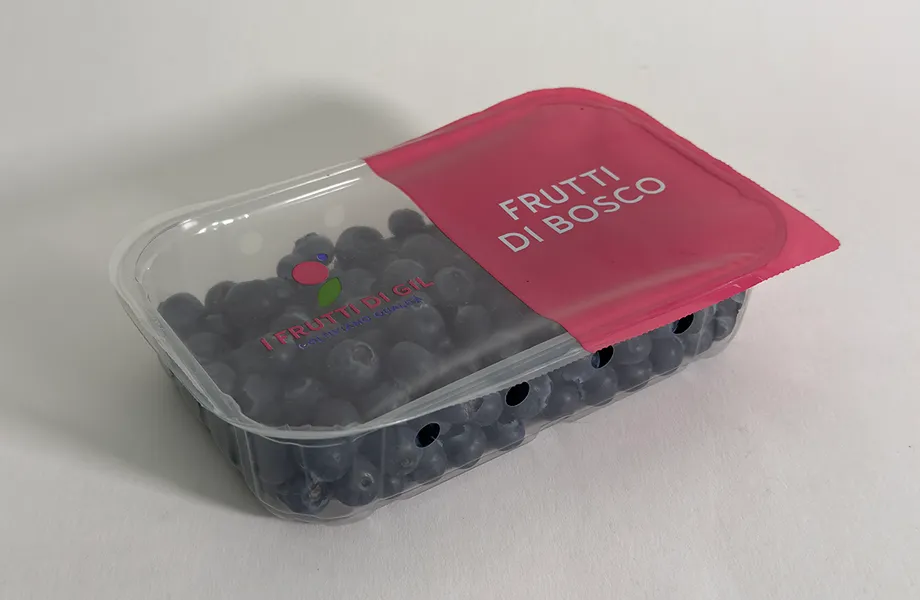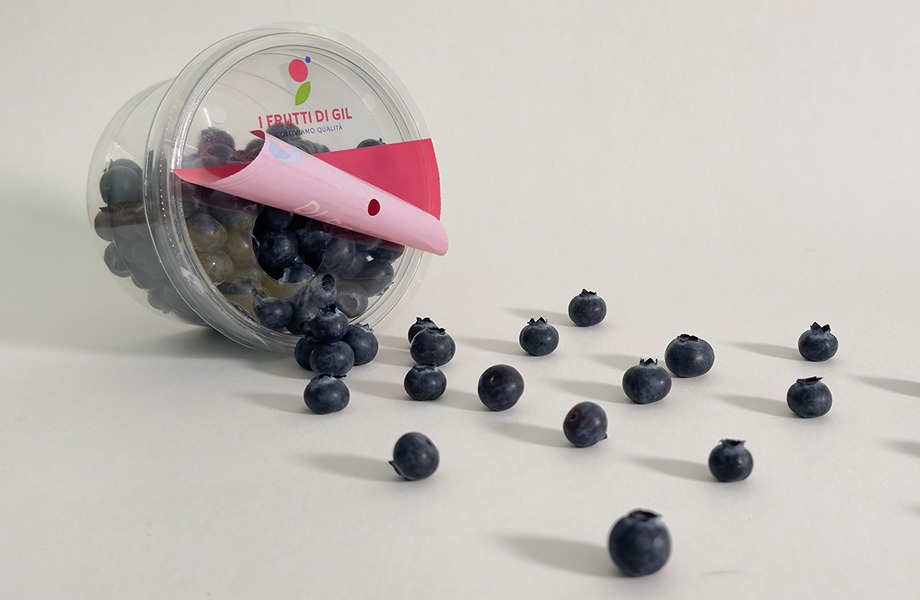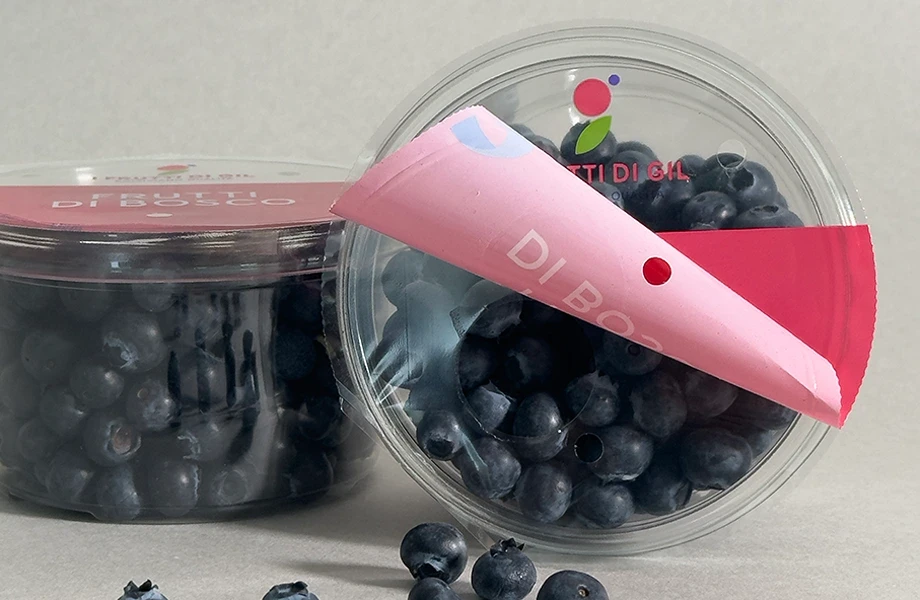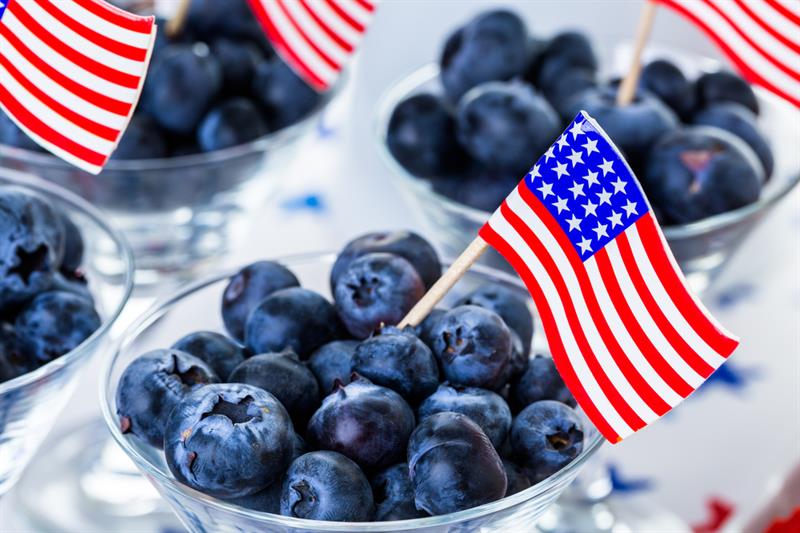I Frutti di Gil focus their growth strategy on the berry segment, with particular attention to the evolution of blueberry packaging. The company has recently launched an innovative “open-close” format, designed to intercept the growing trend of "snackability", alongside a renewed interest in large formats driven by retail demand and increasing per capita consumption.
"Packaging has been a strategic element from the beginning for us, a real tool for enhancing the product and responding to consumer needs," explain co-CEOs Matteo and Luca Molari to Italian Berry. The latest innovations presented at Macfrut confirm this corporate philosophy, with solutions ranging from heat-sealed formats—aimed at premium presentation and sustainability—to the new “open-close” format, designed for practical and portioned consumption.
The company is also exploring the use of heat-sealable cardboard for specific projects, with the goal of minimizing environmental impact.
Large formats for blueberries
"Demand for large formats, especially for blueberries, is constantly increasing. On one hand, retail recognizes their potential to increase turnover and penetration. At the same time, consumers are showing growing interest in larger packs, in line with increased individual consumption."
"The bucket format is establishing itself as the main driver of this trend. However, we believe it's crucial to reflect at a supply chain level: managing large formats requires careful evaluation of the product's characteristics in different seasonal phases, to avoid damage risks and ensure optimal quality for consumers."
A synergy between growers, packers, and retailers is essential to fully capitalize on the opportunities offered by large formats in blueberries."

"Open-Close": the innovation
"The development of the 'open-close' format for blueberries stems from a twofold need: on one hand, to facilitate product consumption in on-the-go contexts, thanks to a heat-sealed packaging that preserves integrity during transport; on the other, to respond to the trend of more staggered consumption, typical of blueberries, by offering a resealable package that maintains freshness and reduces waste, especially in the 250-gram format."
"We increasingly see blueberries as a healthy and practical snack, and this new packaging aims to reinforce that perception, intercepting new consumption occasions."
Beyond 500g
The 500-gram format is already well-established for blueberries during certain periods, available in both bucket (also with the ‘open-close’ version) and punnet formats. "The 1 kg format is emerging in specific segments, such as wholesale and some discount retailers," say Matteo and Luca Molari. "While we recognize its potential, we believe it is essential to carefully evaluate the relationship between format, price, and product quality to ensure its success."
"It's important to emphasize that the push toward larger formats mainly concerns blueberries, given their greater resistance compared to more delicate fruits like raspberries and blackberries, for which the maximum format is generally the 250-gram punnet."

Segmentation of the Italian market
According to Matteo and Luca Molari, the Italian market still shows a limited tendency for segmentation of berries on the shelf. "As for certifications, organic, although present, remains confined to specific retail chains. Zero Residue is gaining interest, and I Frutti di Gil is also starting initial trials in this area."
"We find the Premium segment particularly interesting, in line with more developed markets such as the UK. Although in Italy this approach is currently more focused on blueberries, we do not rule out future developments also for raspberries."
"However – they conclude – to implement effective segmentation, a close collaboration with retailers is essential, moving beyond a logic solely based on price."










